WebAge is a Mac adware infection with browser hijacking capabilities. It pretends to be a useful program and claims to help users. This application usually infiltrates the targeted Mac machine without users’ consent. This program is designed to redirect users to sponsored sites for monetization purposes. Upon successful infiltration, it continuously delivers intrusive ads and pop-ups on your browser forcing you to visit unknown websites.
Threats like WebAge keep getting back on Mac if all associated files are not removed. So you are advised to use a powerful Malware Removal Tool to run a thorough scan of your mac and delete all threats at once.
What is WebAge?
WebAge is a potentially unwanted program deemed as adware. It is programmed to show unwanted ads on the infected browser. It is a completely useless program that silently gets installed on your Mac without permission. This threat will sneak into your Mac and modify browser settings. It can work with all famous and mostly used browsers like Apple Safari, Google Chrome, Mozilla Firefox, and others. Once installed, it can make several unwanted changes to your system and browser settings. WebAge can even change the homepage and search engine of your infected browser without permission. It can also prohibit you from undoing those unwanted changes.

WebAge can create several copies to avoid complete removal. Whenever you will open your browser to surf the Internet, you will get loads of misleading and annoying advertisements on your screen. It can also create library files for automatic regeneration. It will get back on your machine every time you reset or reinstall your browser. You will find it very difficult to find and remove this application manually from your Mac. It is very important to remove all the files created by this infection and undo also the changes made by it to your system and browser settings.
How do I get rid of WebAge on my Mac?
If your mac is recently infected by this virus then you might be able to delete this infection simply. But when it get some time to spread its roots on your machine then it will lot harder to get rid of this infection. For removing this threat at first encounter, follow these steps :
- First of all, click the Finder application on your dock to open “Finder”.
- Now click on the “Applications” option in the Finder left pane.
- Search for the WebAge infection in the Applications folder.
- Remove it by selecting the Thrash Icon next to it.
- Finally, click on the “Empty Trash” option.
If you were able to remove this infection by these steps then it’s good. If this virus is still on your Mac then it has already spread on your machine successfully. Don’t worry, you can still remove this infection but you will need to use some more elaborate methods. Keep reading this guide for details.
Is WebAge a virus?
WebAge is an unwanted application that has cunningly managed to get installed on your Mac without permission. This clearly shows that it is malicious and when you are not able to remove it through simple methods, it proves that this application is also notorious. It is not incorrect to mark it as a virus because all its activities suggest the same. This unwanted app shows annoying ads, redirects the browser to unknown sites forcefully. It may steal your info, download other viruses, push a lot of ads on every web page you visit, and perform all sorts of malicious activities
Is my Mac infected?
When your device is infected, you will notice several problems. If you see any of the following symptoms then your device might be compromised :
- Lots of unwanted Ads will appear on every web page you visit.
- The browser’s homepage may get changed without your permission.
- Several link ads, new tab ads, and browser redirection.
- Several annoying browser popups appear with fake messages.
- Suggestions to download other unknown applications.
How did my Mac get infected?
WebAge mostly attacks your machine bundled with free third-party applications. Unfortunately, many freeware programs do not disclose the information that other software will get installed along with them. This is how it may have got installed on your Mac without your knowledge.
It is very important to check every detail before installing any free program. You should choose a custom installation method to avoid any such kind of unwanted applications. This nasty adware infection can also get dropped on your machine via fake updates, misleading ads, and suspicious websites.
WebAge: Threat Analysis
| Name | WebAge |
| Type | Adware |
| Threat Level | High (source to distribute other harmful threats). |
| Symptoms | Users can experience changes in their browsers and an excessive amount of annoying pop-up ads. |
| Distribution | It could be distributed through spam emails, bundled freeware, porn, or torrent sites. |
| Damage | It can modify browsers, show unwanted Ads, steal personal info and bring other threats. |
| Removal | Download SpyHunter For Mac |
How it is dangerous for your Mac?
WebAge is a Potentially Unwanted Application (PUP). It is aimed to boost the traffic of dubious websites by showing lots of unwanted ads to earn a commission for its creators. It will gather your browsing preferences and spy on your online activities to fulfil its evil intentions. This threat can collect your browser cookies and monitor your online activities. It can gather your personal information like social media account details, login ID, passwords, IP address even credit card details.
This nasty virus can risk your privacy and expose your financial security. It can share your details with hackers to use in illegal activities to make an illegal profit. You may become a victim of online fraud and identity theft. It can also create loopholes on your machine that can be used by other threats and hackers to invade your machine. It is highly important to remove WebAge infection from your Mac as early as possible.
How To Remove WebAge
Follow this guide carefully to remove this virus completely from your system. Below you can find step-by-step instructions on how to effectively get rid of this nasty threat easily. Removal of threats like WebAge Virus is never easy, so we have simplified the process for you in several small steps.
Quick Summary of Removal Instructions:
Please Bookmark This Page by pressing the {ctrl+D} button or print it out on paper before you start the removal process because you may need to restart your PC or browser.
Automatic WebAge Removal Guide
As you already know, WebAge is a notorious and cunning malware that is not hard to remove easily by any user through manual means. This virus can keep coming back on the infected computer through files and shortcuts or settings that it has already created on your machine. Removing all those at once is the only way to get rid of this infection and stop it from getting into your system ever again.
So the best way to remove WebAge effectively is to use a powerful Automatic Removal Tool and save your time and efforts. This software is a well-trusted and very powerful anti-malware program that can detect all hidden threats like Trojan, Ransomware, Worms, Spyware, Rootkits, and many others. It is a pretty advanced and effective Mac optimization tool that also provides 24X7 customer support. SpyHunter for Mac is the best app to ensure your Mac’s safety and keep it fast like new always. If you value your Mac then it is the most important application for you. Try this software once and you will never have to worry about any malware attacks.
How SpyHunter for Mac Works
- First, you will have to click on the below download button to get SpyHunter Mac Anti-malware.
Geek’s Recommendation
Threats like WebAge keep getting back on the machine if all associated files are not removed. So you are advised to use a powerful Malware Removal Tool to run a thorough scan of your Mac and delete all threats at once.
- After the download, go to the Download Folder from the Docs and Install the SpyHunter For Mac Anti-Malware.
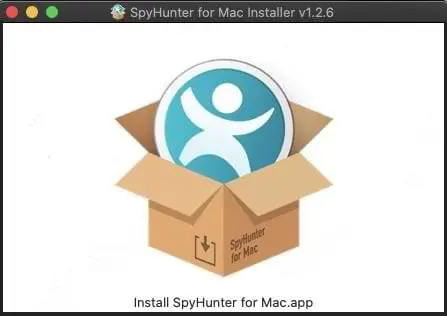
- Once the application is installed launch the Program, and click on Start Scan Now button.
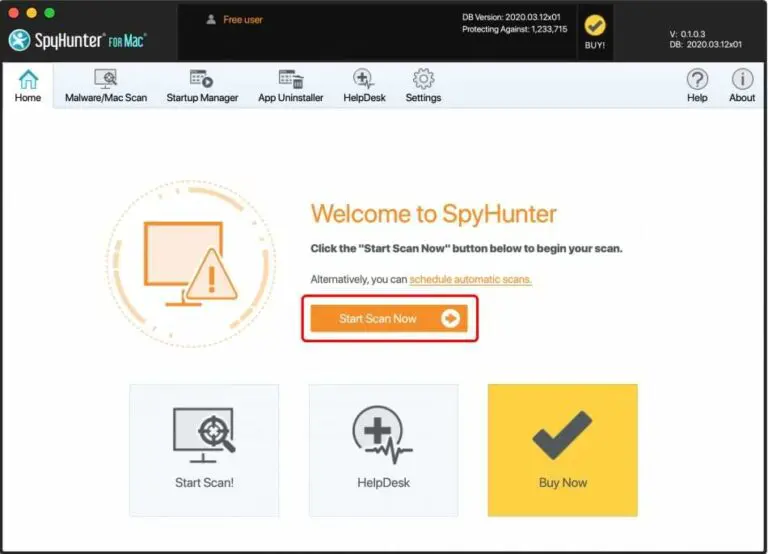
- The software will start running a full scan of your mac instantly to look for any malware, virus, threats, malicious programs or security risks, and so on.
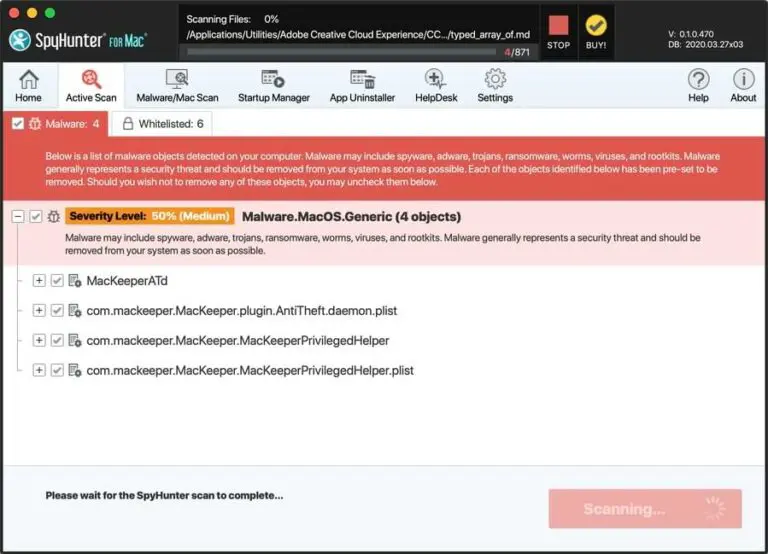
- Finally, you will see a list of malware detected on your mac, now click on the Next button to start the removal process.
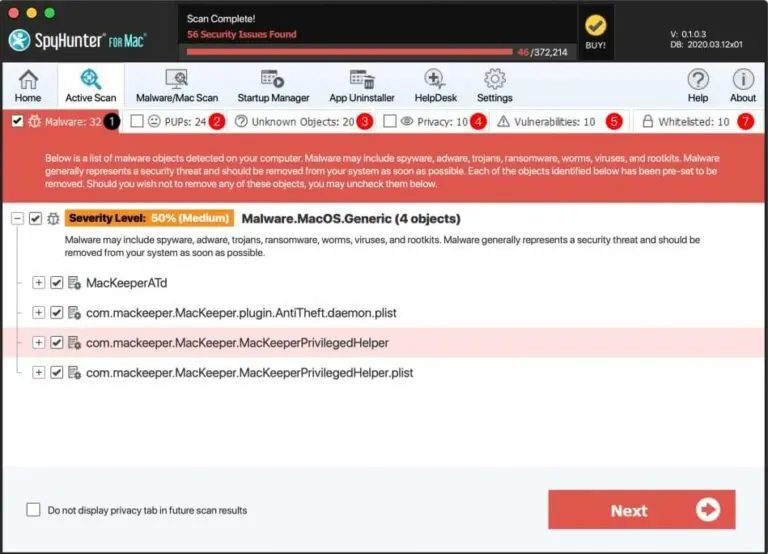
Manual WebAge Removal Guide
Attention! For the safety of your system, please confirm a few things before you begin Manual Removal:
- You have done this before, which means you have experience in removing viruses manually;
- That you know your way around Mac and all necessary process and applications;
- You know about LibraryAgents and the serious repercussions of any mistake;
- Make sure you can reverse any mistake made during manual removal.
If you don’t attain any of the above standards, then manual removal could be a very risky idea. It is most likely best for you to use the Automatic Removal Method, which is totally secure and efficient.
Stop Malicious Program From Activity Monitor
- First, you need to open Utilities folder on your Mac system.
- Find the Activity Monitor icon and double-click on it to open.
- Find WebAge related process, and click the cross button from the upper left side corner to end the task.
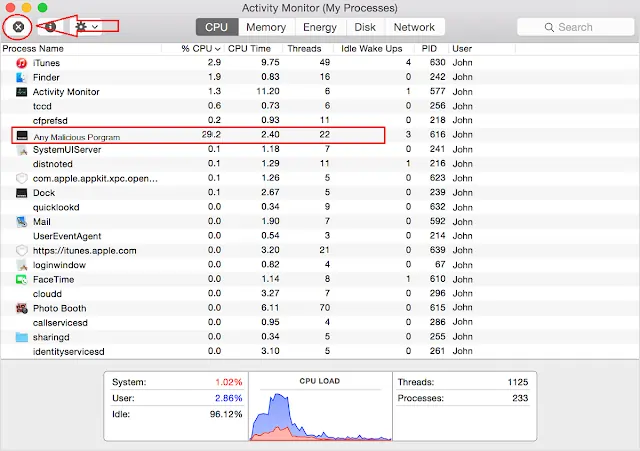
- A pop-up dialogue box will appear on the screen and click on the Force Quit button.

Remove Virus From Application Folder
- First, go to the Dock option (bottom of your screen) then click on Finder App.
- Now you have to open the Applications Folders to see all the programs.
- Find WebAge or any other unwanted program then move it to Trash.
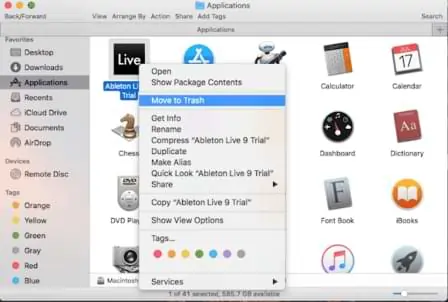
Remove Virus Related Files From Mac
When any program is installed on your Mac, it creates several files on your system that support the functioning of that application. If you need to remove any virus from your Mac, then you need to delete all related files completely. These files could be found at :
- LaunchAgents
- Application Support
- LaunchDaemons
Follow the below steps to remove virus related files from these locations:
- First of all press the Command+Shift+G buttons together on your keyboard.

- Now you can see the Go To Folder option on your Mac screen.
- Type in /Library/LaunchAgents in the text field and click on the Go button.
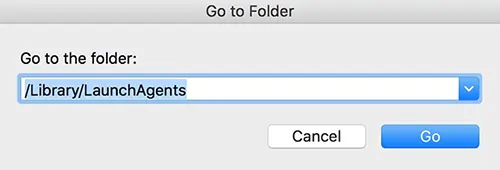
- Find and remove any WebAge related or malicious file.
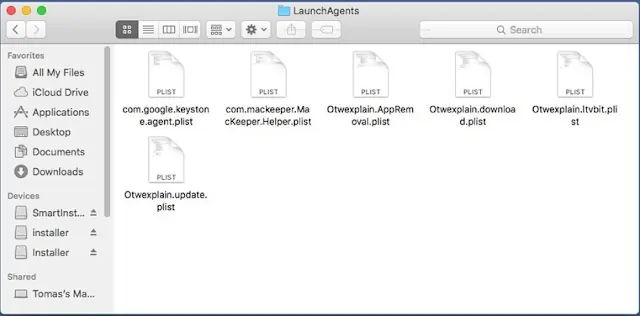
Now follow the same process for Application Support and LaunchDaemons folders. But be careful, don’t delete any important files or you can break down your entire system.
Attention: Don’t go meddling around and deleting files that you don’t know about. Removing any wrong file may damage your Mac. So you are advised to download SpyHunter Mac Anti-Malware and run a thorough scan of your system for threats and viruses.
Remove Infection From Your Browser
Threats like WebAge often install malicious extensions to the browser on the infected machine and make several unwanted changes to the browser settings. You might experience forced browser redirection, lots of annoying pop-up ads, and commercials on your browser due to this. You will need to remove the infection from your browser to put an end to such activities and block the regeneration of malware on your system.
Remove WebAge From Apple Safari
- Launch the Safari browser on your Mac then click on the Safari menu and select the Preferences option from the drop-down list.
- Now to see the list of all installed extensions on your browser click on the Extensions tab.
- Find the virus related extension and click Uninstall button then again click the Uninstall button to remove the extension completely.
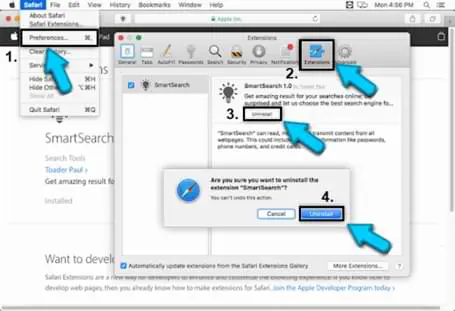
Remove WebAge From Google Chrome
Note: Type or copy-paste – chrome://extensions in the URL bar of Google Chrome then press the ENTER button to open the extensions page directly or follow the below steps.
- Launch the Google Chrome browser on your Mac, then click the Menu (⋮) option that you can find in the upper right corner of your browser.
- Chrome drop-down menu will instantly appear, click on More tools then select the Extensions option to see all installed Extensions on your chrome.
- Find any virus related or suspicious extension then click the trash can icon to remove it completely.
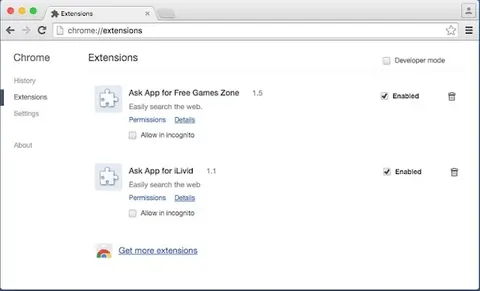
Remove WebAge From Mozilla Firefox
Note: Type or copy-paste – about:addons in the URL bar of Firefox then hit ENTER button to open the extensions page directly or follow the below steps.
- Launch the Mozilla Firefox browser on your Mac and then click on the Menu (☰) option which you can find in the upper right corner of the browser.
- You will see a drop-down menu instantly, click on the Add-ons option from that menu.
- On the left sidebar, you will see the Extensions option, click on it to see all installed extensions on your browser.
- Look for any suspicious or potentially unwanted extension then click on the Remove button to get rid of it immediately.
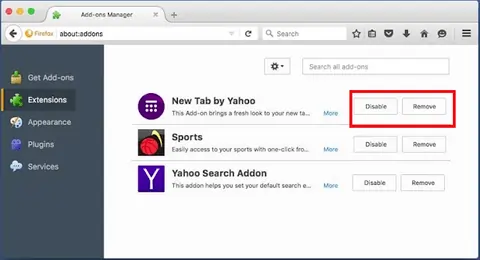
Reset Browser Setting to Default
Once you remove the malicious extensions from your browser, you might want to reset the browser to default settings to reset any changes made by them. Follow the below steps for that :
Reset Safari To Default
- Open your Safari browser, tap on the Safari menu and select the Reset Safari option.
- Now check all the boxes and then finally click on the Reset button.
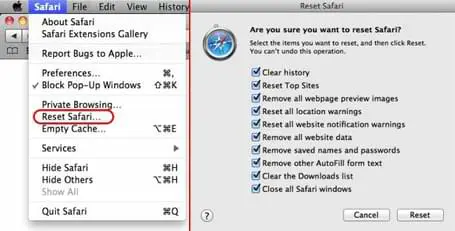
Reset Google Chrome Web Browser
- Open Google Chrome, click on Menu (⋮) then select the settings option.
- On the Settings page, scroll down to the bottom, and click the Show Advanced settings option.
- From Reset and clean up click on Restore settings to their original defaults.
- Finally, click on the Reset Settings button to reset your chrome browser.

Refresh Mozilla Firefox Browser
- Open Mozilla Firefox browser, click on Menu (☰) option, and select the (?) icon.
- Click on the Troubleshooting Information option from the drop-down menu.
- Then press the Refresh Firefox button and give confirmation.
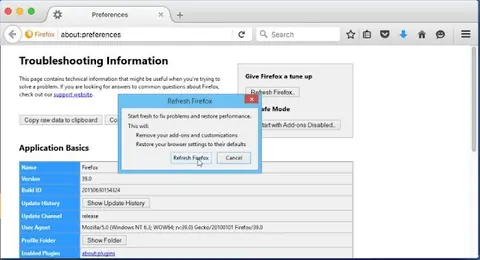
Once you are done with these settings hopefully your problem is solved. If not, then you can also always download the Mac Anti-virus Program mentioned in this article to get rid of all the threats and viruses automatically. You can also take some precautions to avoid similar malware attacks in the future. Follow the below steps to improve the security of your Mac system.
Prevent WebAge in Future
- Get a powerful Anti-Malware or Anti-virus to fight cyber threats. Free versions do not offer the best protection and cracked security programs can do more damage than good.
- Always keep your Mac firewall active, and your OS updated along with other important programs. Only download updates from official sites or reliable sources.
- Check HTTPS before entering your email, password, credit card details, etc. to any site. Do not visit sites that do not have SSL security. Also, don’t forget to Enable Phishing and Malware protection in Browser.
- Do not download or install any type of pirated software, games, or illegal patches. Avoid using shady sites to acquire freeware programs because they often use software bundling. Never install a program that asks you to inactivate your anti-virus software.
- Avoid opening spam emails from unknown senders. Always scan all the email attachments before opening them. Never click on any suspicious links with some too good to be true offers.
- Connecting your Mac or iOS devices to unsafe public Wi-Fi is not a good idea. You can also avoid unwanted threats coming from malicious sites by using a VPN to spoof your connection.
- Keep regular backups of all your important data on external hard drives or cloud drives to avoid data loss in case of a ransomware attack. Also, create a Mac Time Machine backup for security purposes.

Leave a Comment